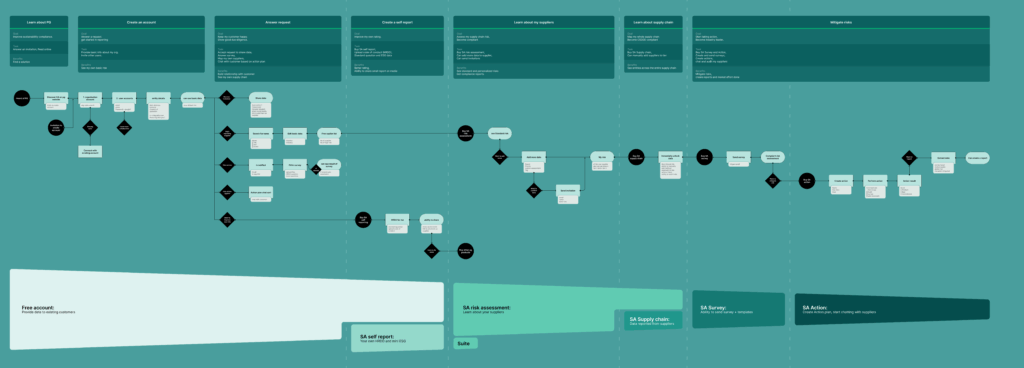Strategy for Position Green Supplier assessment
Supplier Assessment is a product of the sustainability reporting suite for Position Green. Focused on reporting the ESG-relevant information about the supply chain, we needed a strategy to guide us in the years to come. Sold as an additional product, our ambition is that the product remains relevant and that it is relevant in using our system against the competition.
- Product trio Designer, Engineer & PM
- Internal & external research + Workshops
Initial decision process
Without a clear strategy, the Product Manager was facing a constant stream of feedback, issues and customer churn risk meetings. Only able to care for the most recent urgent issue, we did not have the capacity to step back to look at the bigger picture.
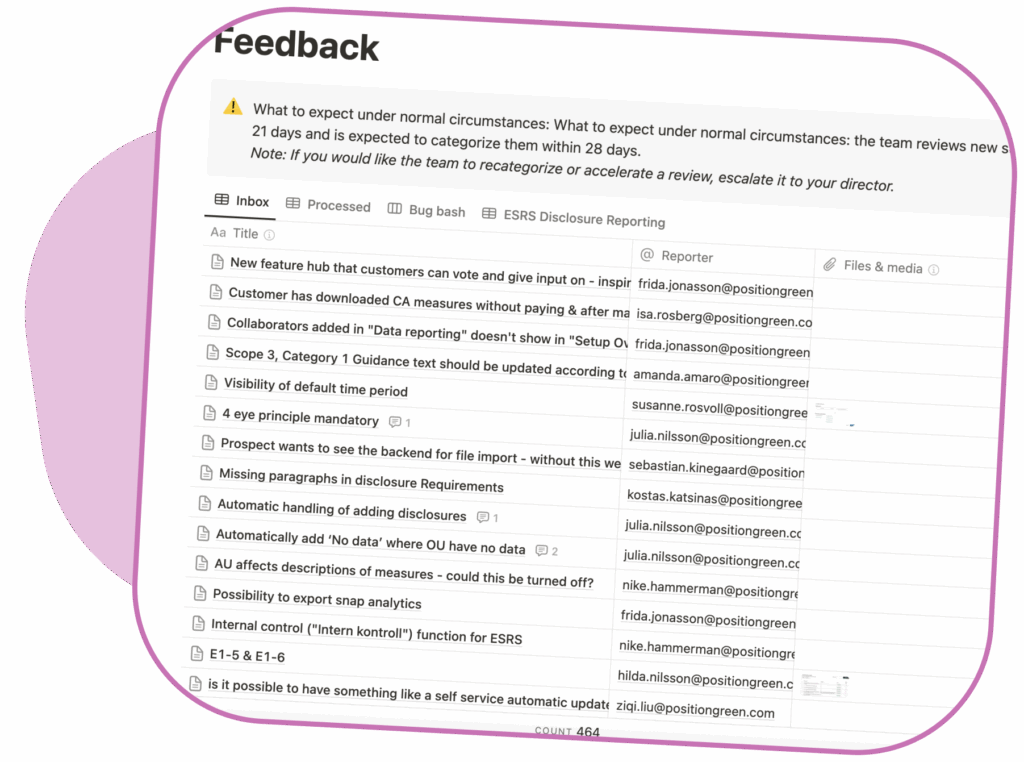
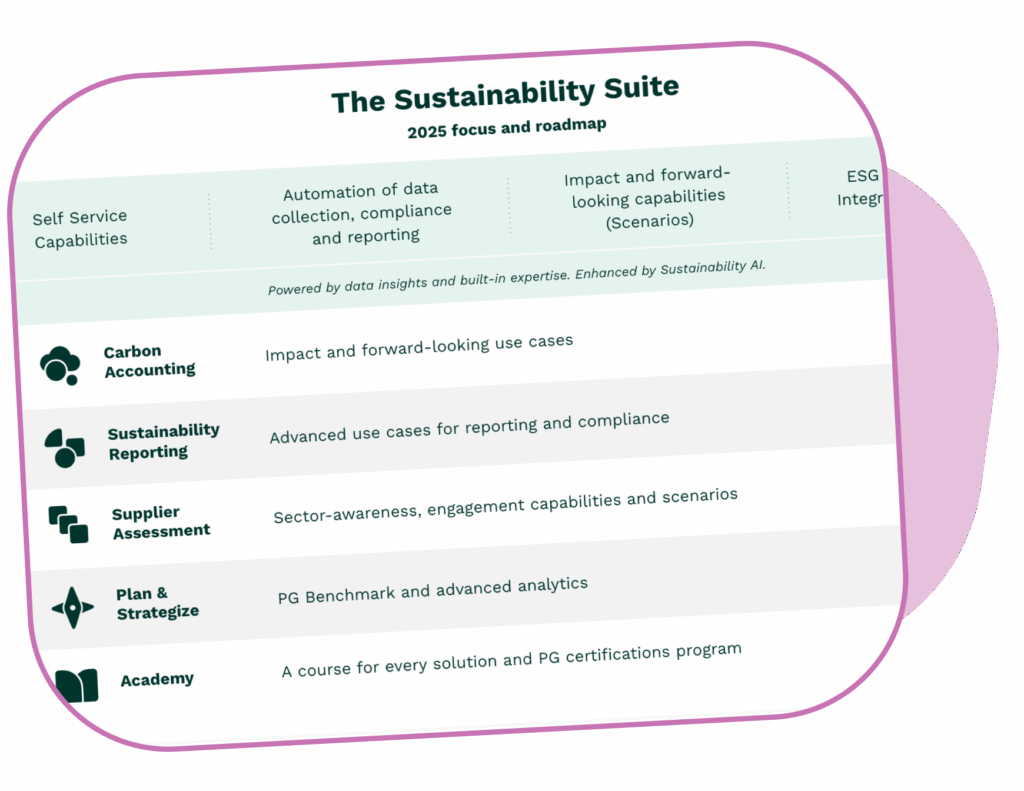
Business goals outside of customer needs
On top of constant feedback, we also had to accommodate for business objectives taken at a group level without our specific use case in mind and the request for shiny commercial features like dashboards or AI. We were at best only able to find tweaks for how a business demand can align with a known customer need.
From inbox to user journey
After mapping 2 years’ worth of feedback in our several inboxes into a connected whiteboard, I also conducted research to understand the users’ journey related to our product.
We could then connect feedback received with events in the experience, better understand how important the work is in the experience, as well as how severe and broad the problem is. Associating requests with objectives also allowed us to understand what the real problems behind the feedback were.
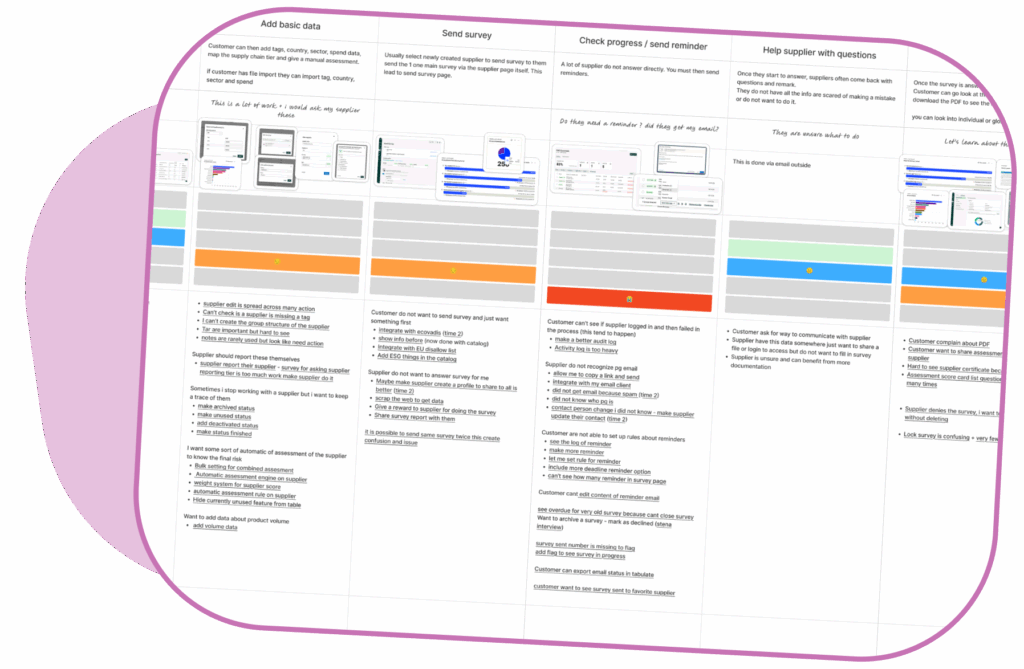
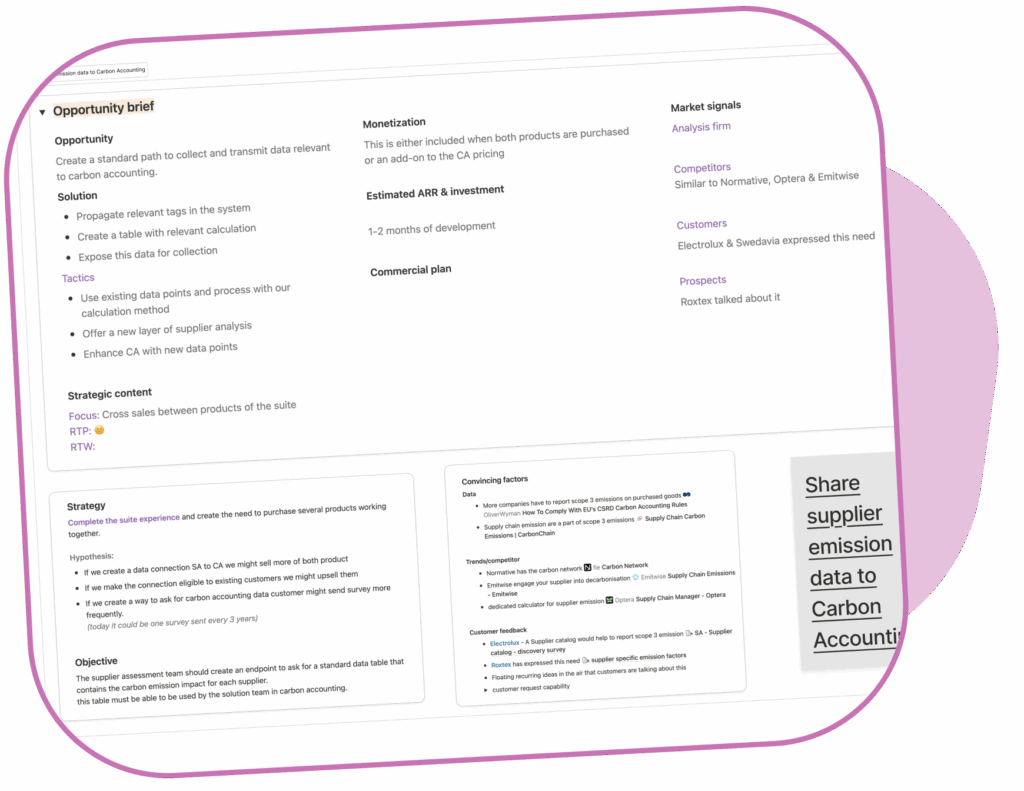
From idea post-it into meaning
Our idea backlog was also filed with one-sentence feature ideas listed without meaning, context, or relations to strategies or feedback. I spent time going into our backlog and documenting back meaning and context related to the ideas. This allowed us, when working on the roadmap, to have a shared understanding of what we mean and why we took the decision to do or postpone the idea.
Long term experience vision
One piece of my work was to also get the decision maker to express together the idea sitting only in their head in the workshop, and visualise what this idea means. I organised a workshop with the Product Manager and solution specialist to help visualise where we were today and what the future vision they had in mind was. We created this document describing both, journey, the technical path and the sales funnel and presented it to the product director. This created a common understanding of what the long-term goal for the product is, as well as distinct areas for development.
Learning
Agreeing with the relevant stakeholder about what the experience is, what the problems are, what the idea we have means and what the longer-term product vision can be does not mean that we agreed on what we will do. The greatest weakness of our team was the lack of independence, coupled with a lack of interest in our product. We were often asked to do nothing or work on projects disconnected from our reality. My learning is that to be effective, I need to raise interest from top management or confront them with the waste of resources.
I had the pleasure of working closely with Jeremie for over a year. He advocates for a solid design process tailored to the project’s scope and ambition, and he quickly gets up to speed on complex problems. I was impressed by his never-ending generation of ideas, often extending beyond his immediate tasks to help others and contribute to the team’s success. Jeremie is confident in his opinions and sets a high bar, often sparking fun, valuable discussions!
Martina Krona, Senior Product Designer @Position Green
Let's meet
I’m curious to hear about your projects & challenges

